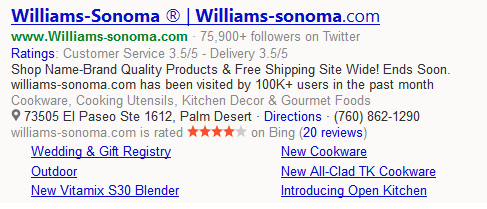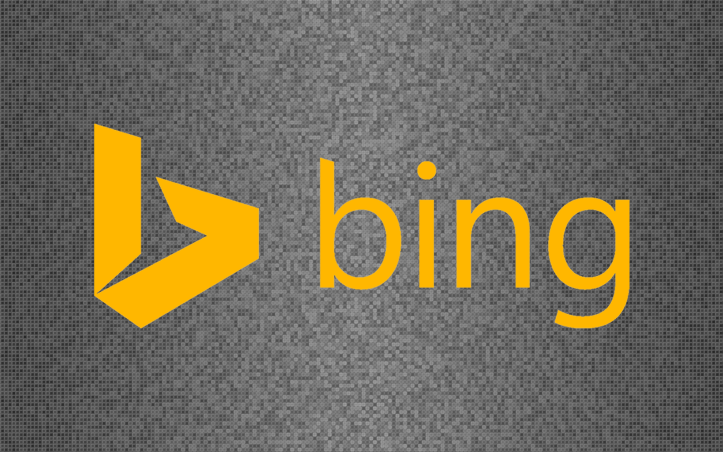I noticed a huge ad unit appearing in the Bing Search Results today where the Bing Ads advertiser managed to lock out an astounding 11 lines at the top of the search results.
The ad appearing for Williams-Sonoma caught my eye because of how many ad annotations (extensions) it had appearing at the same time – 8 in total. On top of the usual site links, they also had consumer reviews, smart annotations, consumer ratings, Twitter annotations, location annotations, and top ad annotations.
 We do tend to notice ads appearing that have 2+ ad annotations running are for branded terms, of which Williams-Sonoma definitely qualifies.
We do tend to notice ads appearing that have 2+ ad annotations running are for branded terms, of which Williams-Sonoma definitely qualifies.
By comparison, here is the Williams-Sonoma ad running on Google.
 An ad in Bing Ads – or Google for that matter – seems to be very unusual. I couldn’t replicate an ad with this many extensions for any other brand search.
An ad in Bing Ads – or Google for that matter – seems to be very unusual. I couldn’t replicate an ad with this many extensions for any other brand search.
Bing Ads (as well as Google AdWords) normally display annotations when they feel the ad performs better with them. However, while having the option for 7 annotations in a single ad might seen like a win, it also makes the ad look extremely cluttered, especially with such a huge mix and variation between the black font and the lighter gray font within the ad unit, which changes almost every other line. Is there a point where the number of annotations actually start reducing click on an ad?
Normally, locking a competitor out of available “above the fold” real estate on the screen is a good thing – and an 11 line ad does quite a good job at it. But since it is those high powered brand terms that tend to result in more annotations, is it really a win (from the point of view of both Bing and the advertiser) if no one clicks the ad?
However, with a little user experience tweaking, an ad unit with that many annotations could work very well – lock up that valuable above the fold space and provide a click happy user experience… but the problem would be scaling it to something that would work yet be flexible to take into account variations in what annotations are being displayed.

nauman says
Looks cluttered but full of information that may result in CTR increase.